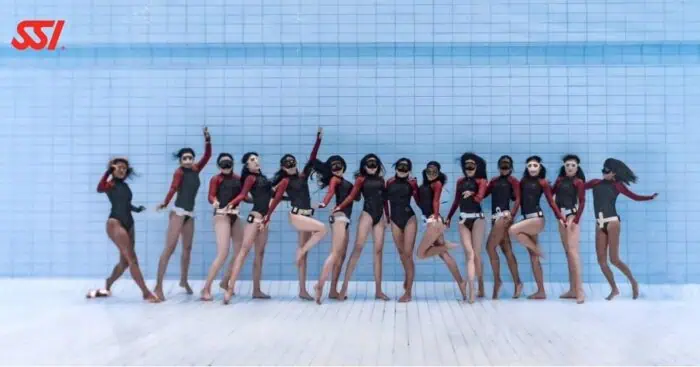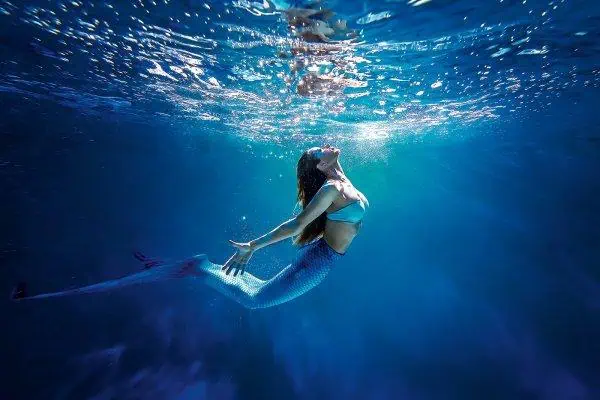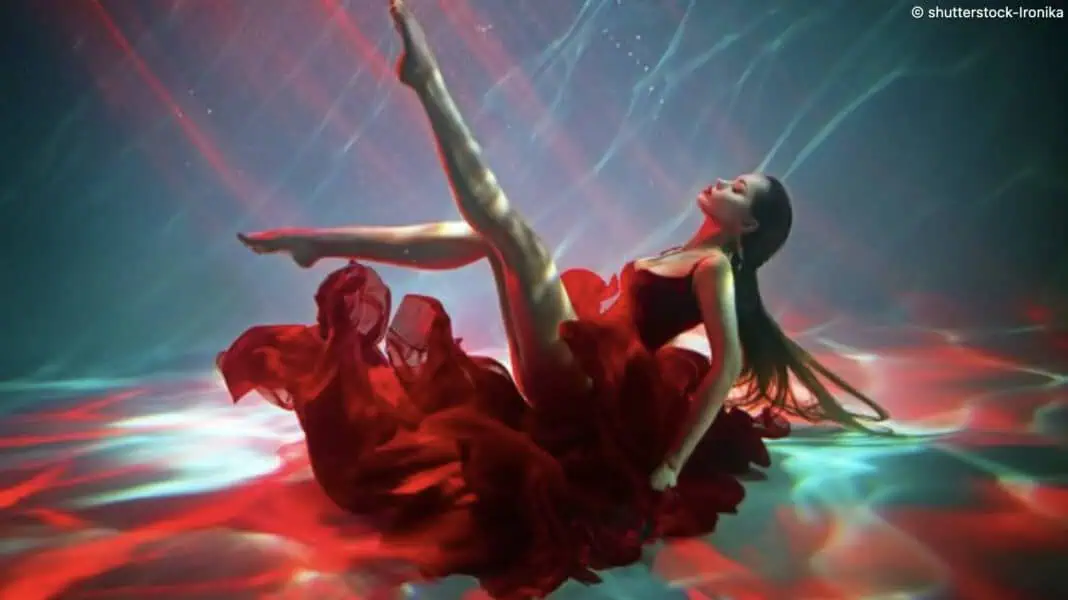Underwater dance isn’t just a trend—it’s a full-bodied experience that connects breath, movement, and water. You’re not aiming for depth records. You’re not chasing medals. You’re exploring stillness, rhythm, and control in a place where gravity lets go. And in a world where everyone is creating content, whether for friends or thousands of followers, Underwater Dance offers a truly unique and visually captivating way to connect with your audience.
If that excites you, this guide will help you take your first steps on land and below the surface. Whether you’re a freediver looking for a creative outlet or a dancer intrigued by aquatic movement, underwater dance offers something unique. It’s poetic, physically demanding, and profoundly meditative. This is how to begin.
What Underwater Dance Really Is
At its core, underwater dance is about storytelling without the use of words. It combines the breath discipline of freediving with the fluidity of modern or classical dance. Think ballet in slow motion, suspended in a liquid world. The water transforms familiar movements into something new—graceful, weightless, and hypnotic.
This form of expression is gaining popularity thanks to social media and artistic projects. It’s performed in pools, oceans, and on camera, blending performance art with athleticism. Unlike performance freediving, the goal isn’t to reach depth or duration—it’s to move meaningfully and with intent.

Why Breath Control Comes First
Breath-hold ability is the foundation of underwater dance. You need the mental calm and physical awareness that freedivers train for. It’s not about holding your breath for minutes on end, but about being able to perform with control while underwater.
Start with a certified freediving or SSI Mermaid course. These courses teach breath techniques, CO? tolerance, and safety protocols that are essential before attempting any underwater movement. You’ll also learn about equalization, safe ascent, and recovery breathing—crucial skills for anyone who plans to dance below the surface.
Practice regularly using static apnea tables and relaxation exercises. Most importantly: never practice breath-holding alone. Shallow water blackout is a real danger. Always train with a buddy or instructor present.
Where To Practice—and Why It Matters
Controlled environments are the best place to begin. A pool offers clarity, predictability, and safety. Ideally, start in water no deeper than 2 metres (around 6 feet). This gives you enough room to move, while allowing for quick surfacing when needed.
As your skills improve, you might transition to open water. The ocean offers incredible visual backdrops—reefs, sunbeams, wrecks—but also introduces currents, marine life, and limited visibility. Only attempt open-water dancing once you have mastered the basics and can remain calm and controlled in unfamiliar conditions.
Practice in short sessions. Track your breath-hold times and focus on comfort, not endurance. Build familiarity with your environment and test movements progressively.
What To Wear (and What To Avoid)
Your gear should support movement and safety, not hinder it. Start with a streamlined swimsuit or dancewear that fits snugly and allows free motion. Avoid clothing that billows, catches water, or restricts limbs.
You can add a monofin or mermaid tail later, but they’re not recommended for beginners. They can complicate movement, require additional training, and pose entanglement risks.
Recommended accessories:
- Nose clip: helps keep water out during inverted poses.
- Lightweight belt: aids in achieving neutral buoyancy at shallow depth.
- Mask or goggles: optional – many performers choose not to wear them to maintain a natural look.
Whatever you wear, ensure it enhances rather than distracts from your movement.

How to Start Moving Underwater
Begin by mastering basic shapes and transitions. Arm waves, slow turns, spins, and inverted movements all look different underwater. Focus on clean, intentional motion and learn to use the resistance of water to your advantage.
Work through choreography on land first, then translate those movements into the pool. You’ll find that some transitions become easier, while others become harder. Use video feedback to refine your style.
Maintain control of your breath and body. Let your movements unfold slowly—fluidity is key. Practice staying aware of your posture, lines, and expression even while submerged.
Watch, Learn, and Adapt
Social media has helped create a thriving community of underwater performers. Platforms like Instagram, YouTube, and TikTok are full of creators exploring underwater dance and mermaiding.
Watch these performances not just for inspiration but for education. Observe how dancers time their breath, what works visually, and how they interact with the environment.
Even better, consider joining a local group or attending a workshop. The shared experience will accelerate your learning and help you stay motivated.
Safety Above All
All underwater breath-hold activities carry inherent risk. Shallow water blackout is silent and sudden. Never train alone. Ensure someone trained in freediving is present when you practice.
Understand your limits. Know the signs of CO? build-up and hypoxia. Use appropriate rest intervals and never push through discomfort to get the perfect shot.
Approach underwater dance with the same seriousness as any other dive discipline. Safety makes creativity sustainable.
Ready to Go Further? Take the Next Step
Once you’ve mastered the basics, consider pursuing some formal training. SSI’s Underwater Model & Dance program offers a structured approach to underwater performance.
During the course, you will learn how to pose effectively, use body language underwater, and adjust camera angles. Explore the course here.
If you want to share your knowledge, consider becoming an instructor.
You can also participate in online events, such as the #SSIDanceChallenge, to gain experience and visibility. These opportunities offer both community engagement and creative growth.
Final Thoughts
Underwater dance offers a unique form of expression – one that seamlessly fuses the physical with the poetic. It’s about letting go while staying in control, embracing both beauty and risk.
Start small. Stay safe. Let the water transform your perspective on movement. You’ll be creating stunning, unique content in no time!
The ocean is waiting—and it’s the perfect stage.
This is a sponsored post – for more information, please see our disclosure policy.

